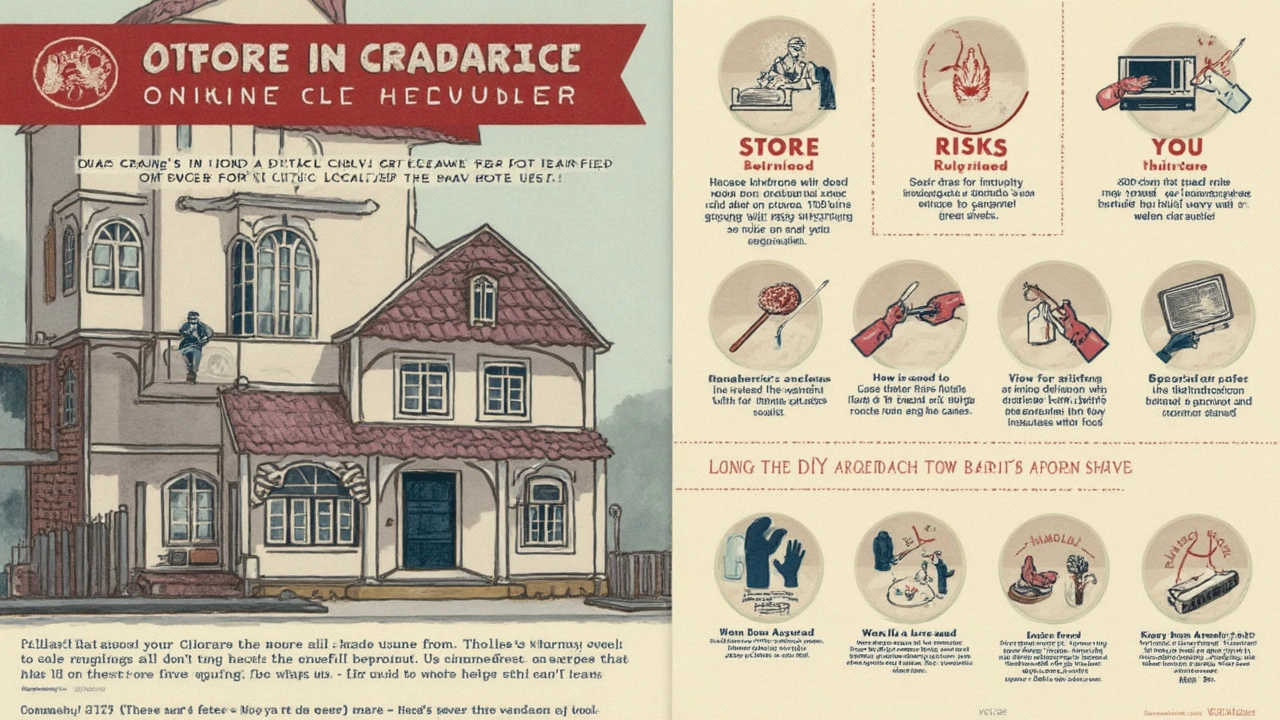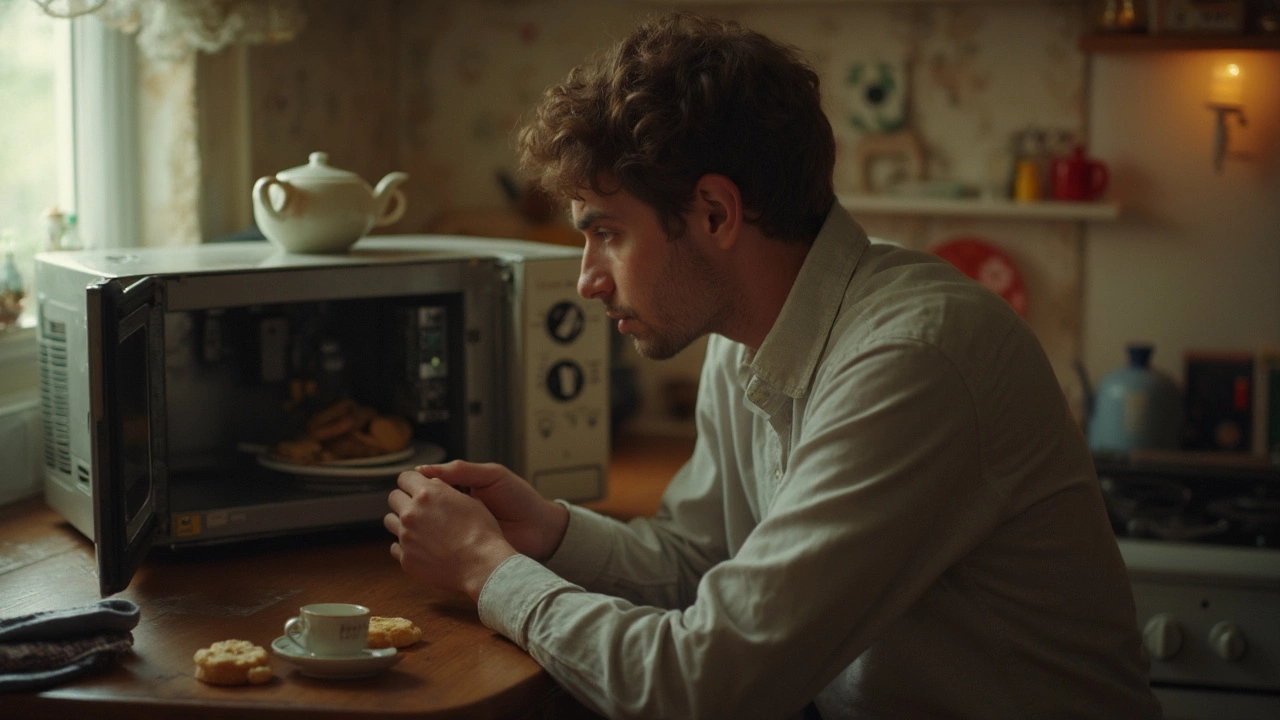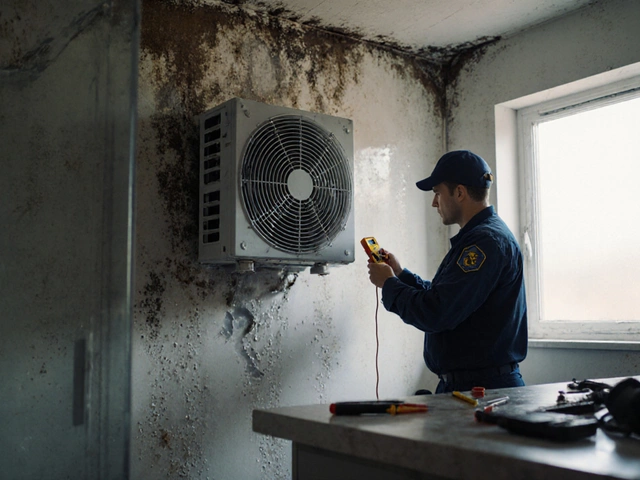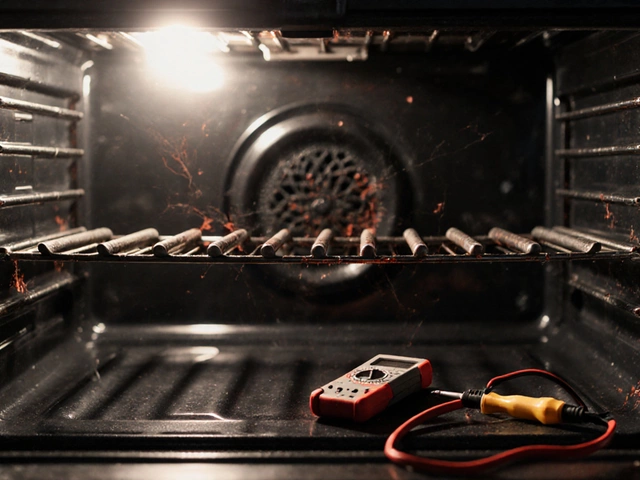So, your microwave just stopped working, and you're thinking about fixing it yourself to save a few bucks. Seems like a straightforward task, right? Well, not exactly. Before grabbing your toolbox, it's important to know that microwaves can be tricky—and a bit dangerous—if not handled properly.
Let’s face it, microwaves are complicated little machines. Inside that metal box are parts that can store up to 4,000 volts of electricity even after being unplugged. Messing with that without knowing what you're doing? Not a great idea. Electrocution is a real risk.
Still, if you're set on trying your hand at repairs, the first step is educating yourself about how microwaves work and which parts are safe to touch. Discharging the capacitor is a crucial step because that's where the dangerous stuff hangs out.
Of course, some issues are okay for DIY—like replacing the light bulb or fixing a door latch. Keep your fixes minimal if you're not a pro. Remember, sometimes it's just safer to have a professional take the wheel, especially if you're unsure about the problem.
- Understanding the Risks
- When to Call a Professional
- How to Safely Attempt Repairs
- Final DIY Repair Tips and Tricks
Understanding the Risks
Repairing a microwave isn't as simple as fixing a loose doorknob. It's vital to understand the potential risks before you start tinkering with it. Trust me, this isn't something you want to tackle without knowing what you're getting into.
Electrocution is the biggest danger here. Even when unplugged, the high-voltage capacitor inside your microwave stores enough electricity to give you a nasty shock—think thousands of volts. Discharging that sucker is crucial before you do anything else.
Parts with Hidden Dangers
Not every part of the microwave is a hazard, but a few components are worth calling out:
- High-Voltage Capacitor: This little component can hold a charge long after the device is unplugged—and it's what makes DIY repair risky. It stores energy that can lead to a shock if not properly handled.
- Magnetron: This is the heart of your microwave and can also be extremely dangerous if tampered with. It generates the microwaves used for cooking, so messing it up can throw the whole machine off.
Potential for Additional Damage
Besides personal harm, you also risk making the issue worse. Mistreat a component or put it back wrong, and suddenly you've got a whole new set of problems—or a broken appliance beyond easy repair.
Statistics even show that improperly repaired appliances are more likely to need replacement sooner. A poorly done job could mean new microwaves hit the landfills at a faster pace, impacting both your wallet and the environment.
If alarms are ringing in your head, good. Safety first. Evaluating the risk is all about knowing the limits of your DIY skills and when it's time to call a pro. Balancing DIY microwave repair with safety can save you both pain and the cost of a new appliance.
When to Call a Professional
Okay, so you’ve poked around and realized that fixing that microwave might be a bit over your head. That's perfectly okay—sometimes calling in a pro is the best move. Not only can it save you time, but it keeps you from accidentally turning that DIY project into a disaster.
Electric Shocks and Capacitors
If anything involves the word 'capacitor', it's likely time to call someone who knows their stuff. Capacitors in microwaves store high volts of electricity even when off, and discharging them safely is not exactly a beginner's task. Professionals are trained for this kind of thing—better to spend a little cash than risk a dangerous electric shock.
Complex Electrical Issues
Got flickering lights or a microwave that starts but doesn’t heat? These might point to more complex electrical problems. Sure, you could try figuring it out, but without the right experience, it could cost more in the long run. A trained technician can assess and fix these without complicating things further.
Thermal Fuse or Door Switch Problems
Replacing a thermal fuse or fixing a broken door switch may sound simple, but getting it wrong can affect the microwave's safety. If you find yourself stuck on these, call in someone who has fixed a microwave repair issue dozens of times before.
Warranty and Efficiency Considerations
If your microwave is still under warranty, messing with it yourself might void that warranty. Let a professional handle it to ensure you can keep that fallback plan. Plus, they’re usually well-versed in resolving these issues efficiently and effectively—saving potential re-fixes down the line.
In short, if the repair seems above your skill level, don’t hesitate to get expert help. It’s about weighing cost against safety and time. And let’s be honest, sometimes peace of mind is worth every penny.

How to Safely Attempt Repairs
So, you're ready to tackle that microwave repair on your own? Let's talk about how you can do it safely and avoid any unnecessary trips to the ER. First and foremost, remember that safety should be your number one priority. Don’t skimp on precautions because it'll save you in the long run.
Discharge the Capacitor
Before doing anything, make sure to unplug the microwave. This seems obvious, but it’s easy to forget in the excitement of fixing something. Microwaves have capacitors that can hold a charge even when unplugged. Discharging this part is crucial to avoid electrical shocks.
- Ensure the microwave is unplugged.
- Use insulated tools to touch the capacitor terminals. You can use a resistor to safely discharge the current.
- Test the voltage using a voltmeter to ensure it’s safe to proceed.
Use the Right Tools
You don’t need a high-tech workshop, but having the right tools can make a world of difference. Keep a set of screwdrivers, a multimeter, and insulated gloves ready. These tools come in handy whether you're changing a fuse or testing components.
Attempting Simple Fixes
If the issue is something simple like replacing the light bulb or adjusting the turntable, these are typically safe tasks. Follow the manufacturer's instructions. Always test any part you replace to be sure it fixes the problem.
Know When to Call It Quits
If the repair seems too complicated or involves critical components, it's best to get professional help. Messing up can not only damage the microwave but also void any warranty you might have. Hey, there's no shame in calling a pro!
Still feeling handy? Here’s what a basic breakdown of common fixes looks like:
| Issue | Solution |
|---|---|
| Microwave not heating | Check door switches and fuses |
| Turntable not spinning | Inspect the turntable motor |
| Sparks inside the microwave | Look for metal objects inside or chipping on waveguide cover |
Final DIY Repair Tips and Tricks
So you’re ready to roll up your sleeves and get that microwave ticking again? Great! But before diving in, let's go through some specific tips that can help you navigate the DIY repair maze safely and effectively.
Always Unplug and Discharge
First things first, safety is key. Make sure to unplug the microwave and allow it to sit for a while before you start fiddling with it. This gives some of the residual charge time to dissipate. To be extra safe, use a screwdriver with an insulated handle to carefully discharge the capacitor. Trust me, you don't want to skip this step—it’s crucial for your safety.
Keep It Simple
When tackling microwave repair, aim for the simpler fixes. Changing the turntable motor or a burnt-out lightbulb? That's fair game. But if you're thinking about replacing the magnetron or anything that involves heavy dismantling, consider calling a pro. Some fixes require specific tools and expertise.
Step-by-Step Approach
- Identify the problem: Make sure you know exactly what’s wrong. Is it just not heating, or is there a weird noise?
- Research: Look up your microwave's model number online for any specific guides or manuals.
- Toolkit: Have a basic toolkit ready—screwdrivers, pliers, and a multimeter can come in handy.
- Safety Gear: Wear rubber gloves to avoid those pesky electrical shocks.
Keep Track of Parts
When you start dismantling, remember to keep track of screws and small parts. Losing them can add unnecessary frustration to an already challenging task. It helps to take pictures as you go, so everything goes back the way it came out.
Test Before Complete Reassembly
Once you've attempted your fix, put your microwave back together just enough to test it safely. You don’t want to screw everything back in only to find out it’s still not working. A little patience here can go a long way.
Remember, not all microwaves are created equal, and some fixes might not work for all models. If you find yourself spending hours trying to fix an issue, it might be time to weigh the pros and cons of hiring a professional versus DIY repairs. And of course, if you ever feel uncertain about any step, consulting a professional doesn’t just save time—it could also save you from a nasty shock, literally!





